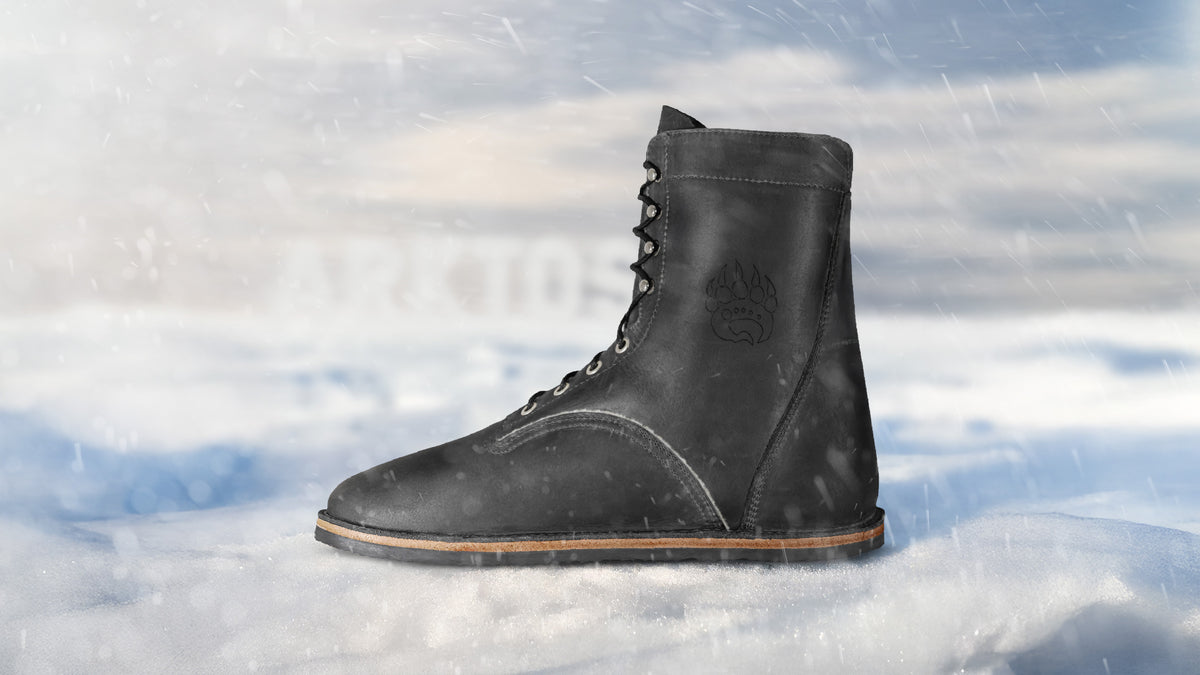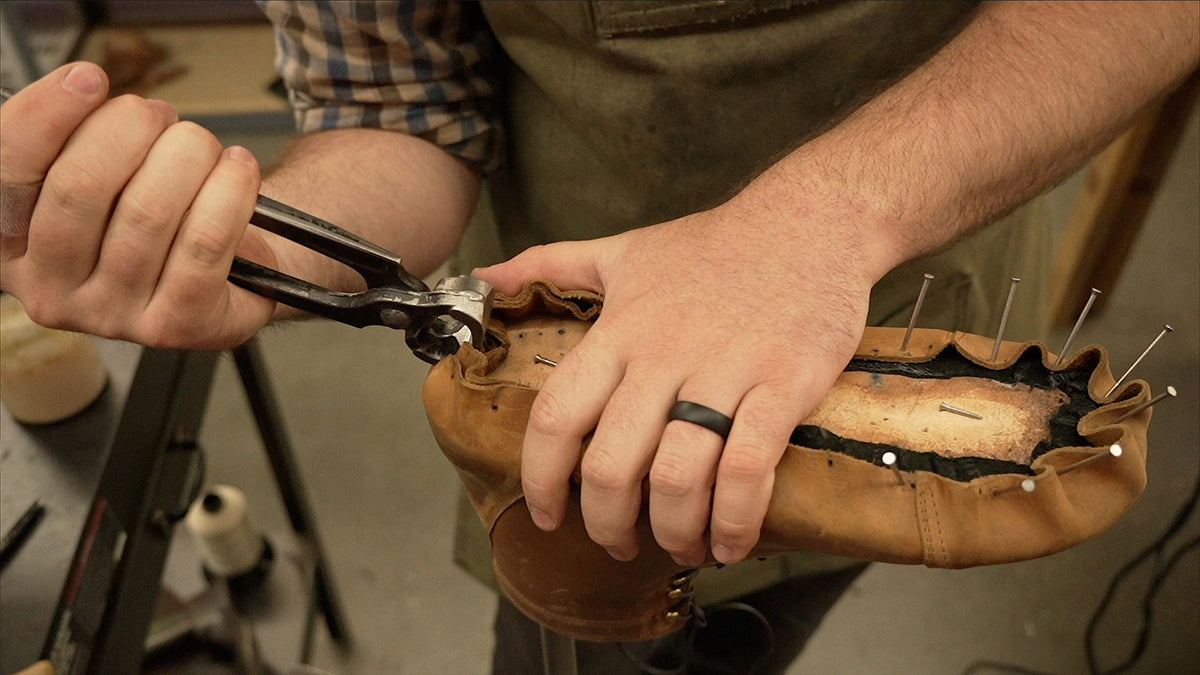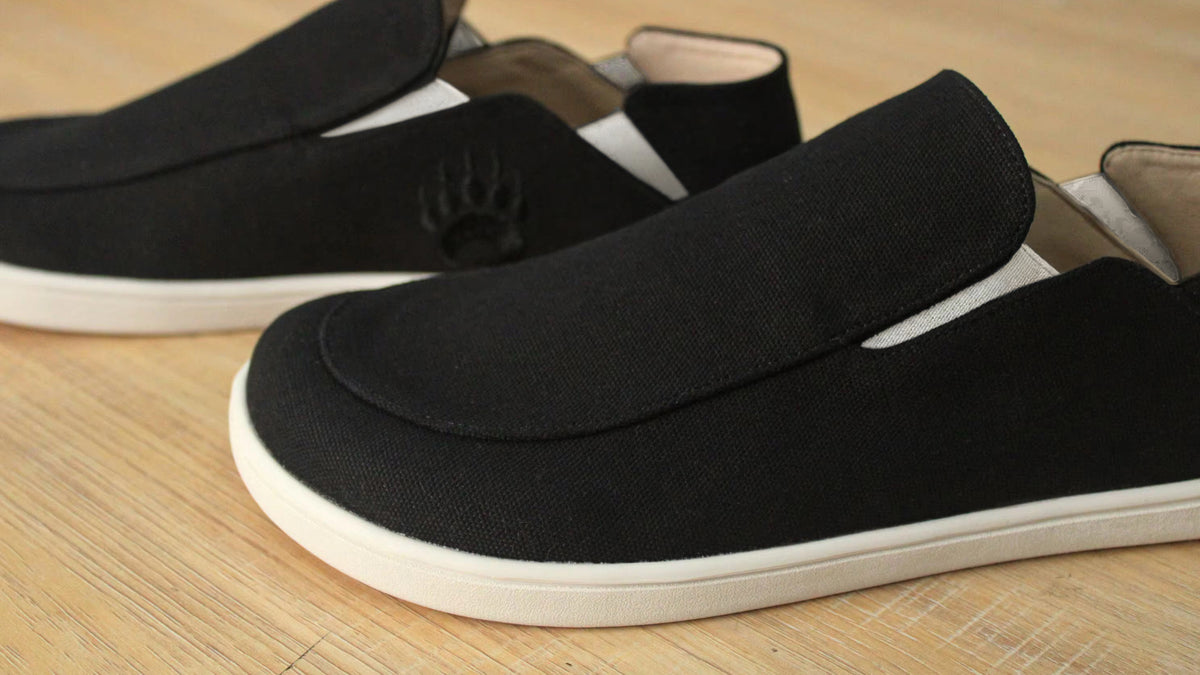Why Aren't You Going Barefoot?
You may be perusing this article as the biggest barefoot promoter in the world or a skeptic. To the skeptic I ask, why are you not already going barefoot? Is it because you’ve heard that you have flat feet and there’s nothing to be done about it? Have you been led to believe that modern footwear has been designed to best suit your needs by supporting your arch? Well, it has and does, but that isn’t the whole picture.
The research that went into designing your last sneaker wasn’t wrong to include all that built-in padding and a contoured bottom. However, that design was built on flawed logic -- that we need to brace our weak parts instead of engaging them! For instance, it has become common medical practice to brace injuries as little as possible. With maximal bracing and support our bones get weaker really fast because they aren’t being exposed to load. As with medical practice, our thought process behind our footwear choices is changing too.
Until recently there was a belief amongst the medical society that the foot was evolutionarily flawed. A body part that failed to adapt properly to the high rate of change found elsewhere in the body. Naturally, this led us to search for a solution to our problem. The solution? Modern shoes.
The shoes we have aren’t the shoes we need. They’re merely putting a band-aid on the fact that our modern lifestyle has left us with flat arches and poorly shaped feet. But instead of strengthening the foot, or making shoes that strengthened the foot, modern shoemakers designed artificial arches to replace what we lack. In reality, modern shoes have served to make our arches weaker and our feet more deformed. Still not convinced? Read on for 5 big reasons you should transition to barefoot shoes.
HEALTHIER FEET = FUNCTIONAL FEET
We’ve all had a shoe that caused foot pain, despite the fact that it had arch support and a cushy foam bottom. Pain occurs when one part of the foot is overloaded beyond its tolerable limit, which happens when our foot can’t move naturally. Going barefoot allows for the foot to move in all directions, dispersing load with its ingenious design. Think of the way your dog’s foot expands outward with each step. As their weight is shifted during movement, their paws splay and contract, constantly distributing load in the most efficient and stable way possible. Modern shoes don’t allow this foot splay to absorb forces everywhere, overloading certain structures and leading to pain and injury.
However, going barefoot isn’t a magical cure all. You may have tried it and found it to be a bit painful, too. Going barefoot requires a transitioning period as the foot adapts to its new load and responsibilities it's been forced to neglect. You have to taper off your old footwear, allowing your tissues time to adapt to their new environment. It’s like all good things, you have to build a foundation first.
It’s not your fault! A misshapen, dysfunctional foot is often a byproduct of poorly designed footwear. As the foot gets exposed to more natural movement, it will begin to spread out, get stronger, and reform its arches. These arches are formed by the tension of your many strong foot muscles. Your foot will become oriented the way it was when you were a young child, and begin to function like our previously mentioned barefoot canine friends.
With the reshaping and strengthening, pain can decrease, stability will increase, and movement will become more efficient. You will find that when your foot is healthier, there is no need for padding and contouring between you and the ground.
Your arches were meant to act like the suspension and of your car. When functioning properly, the suspension absorbs and releases force as you drive to keep everything balanced and stable while you drive. Your arches are meant to be similar. They are made to lengthen as you load them, and recoil as you begin to move them away from the ground. A healthy arch should act like a spring, propelling you forward as you walk! The more you go barefoot, the stronger and healthier they get – just like all the other muscles, joints, or bones in the body when exposed to proper loading.
GOOD POSTURE STARTS WITH YOUR FEET
Our feet are our connection with the earth and thus the primary way our body is oriented to gravity’s load. The feet dictate how the rest of the body must stack itself. When the feet are dysfunctional or shackled by modern footwear, it becomes impossible to obtain an ideal posture. This is because the body is meant to be balanced in its strength, and supported amongst an alternating series of curves and joints. Each curve and joint is built to be tensioned to a certain range of responsibility during movement.
Body parts far away from your feet (e.g. your shoulders, neck and head) have to change position a lot for every small change at the feet. This is because forces are exaggerated with long lever arms—think of how it is easier to pry a nail from a board with a crowbar than a hammer.
Even though a shoe may have only a small heel, large alterations must be made to mediate its effect. Every joint upstream from the ankle then has to compensate for its position.
However, when the feet are able to achieve a natural shape, they allow for the ankle, and further upstream at the knee, hip, spine, shoulder, neck, jaw, and skull, to achieve balance (think neutral joint alignment).
With postural balance comes
-
Less strain
-
Less stress
-
More athleticism
-
Increased poise
LESS PAIN & BETTER MOVEMENT
A large amount of the pain we experience comes from overloading a body part. As we just discussed, the body is meant to balance and disperse load over many parts. When we don’t have this postural balance, one body part is unable to accept its responsibility in the balancing act the way it is meant to, leaving another body part to work overtime to pick up the slack. You may be thinking… didn’t you say earlier that the body will adapt to its imposed demands? Yes, I did.
The body will adapt to the stress placed on it. However, that doesn’t mean that our tissues can adapt indefinitely. The structures that have been appointed to work overtime will, over the span of years, reach a point where they are being stressed too much. Here, we see achy pains and injuries like plantar fasciitis, bunions, and hammer toes…ouch
Does this sound familiar… “I wasn’t even doing anything, I just bent over to pick something up off the ground and my back started hurting.” Although it’s true that you may not have been doing anything that crazy at that moment, a common mechanism of injury is the culmination of poor posture and joint alignment over a lifetime. Ever heard of the straw that broke the camel’s back?
With healthier feet, we start good posture from the ground up (get it?). With better posture, we get the optimal distribution of load throughout all the structures of the body (think those problem areas like knees, low back and neck). With better load distribution, we level the playing field between stress and recovery. When our body adapts to proper loading, we get to live stronger and less painful lives.
REMEMBER IT’S A LONG GAME
Our body was designed to be oriented in an ideal manner. Our joints and muscles operate in a series of fine-tuned fulcrums, joints, pulleys, and levers. When all these parts work in harmony , we expose the brilliance of our design. We allow our large prime movers to function for force production, and other muscles to aid them by creating stability to transmit that force.
We aren’t saying that barefoot shoes are going to immediately fix all your ailments, but it is the beginning of cultivating alignment of the entire body. This allows for the muscles and joints to orient themselves in a manner that produces and transmits force more efficiently and powerfully.
If we want to see our body at our genetic peak, we need long-term adaptation to occur in a manner that pushes our physiology and performance to its limits without concurrently wearing us down to the point of damage and injury. While dysfunctional feet won’t immediately cause injury to occur, they increase the risk and rate of failure simply because they require other joints to compensate for their weakness. Stated plainly, dysfunctional feet cultivate dysfunction and imbalance elsewhere in the body, making us more prone to injury and less likely to perform at our best over the long term.
THE INVISIBLE BONUS OF BAREFOOT
We’re consistently amazed by how each passing year it's easier and easier to be isolated from the immediate world around us. In an age of hyper-accessibility, we find ourselves often inaccessible to the present. Besides the temperature as we go from our house to our car, it’s easy to pay little attention to our environment and the world around us.
Reconnecting to the ground with a barefoot shoe is a simple act with a sprawling reach. There is so much more information you get from wearing a barefoot shoe than with traditional footwear. You're empowering each step to be a mindfulness exercise as you can’t just stomp over everything in your path. As you gain knowledge of the world you’re moving upon, you begin to unwrap all the other information that is out there every moment of every day. Stronger feet, healthier bones, better joint mechanics, a better connection to our world, more mindfulness -- that’s one heck of a deal.
Next time you’re out for a walk, put on barefoot shoes and feel the ground underneath you. Move slow enough to feel the heel, the middle of the foot, then toes hitting the ground. Pay attention to how your whole body adapts with each step. What do your shoulders, your core, your low back feel like? Enjoy the benefits of less separation between you and the earth.
There you have it 5 reasons to go barefoot:
- Healthier Feet
- Less Pain
- Better Biomechanics
- Increased Longevity
- Improved Mindfulness
If this blog was helpful please share it with a friend!
Your Bearfoot Friends,
John Baker & Lily Hoog-Fry



